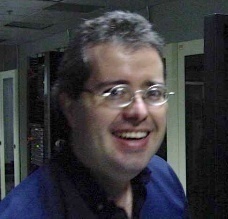Arturo Gutiérrez Loza is a Computer Systems Engineer at Dell in Guadalajara, Jalisco, México. Arturo’s current position is a Systems Administrator Sr Advisor in the Dell Infrastructure Services Delivery area, working on process, procedures and tools improvements and knowledge management initiatives. Prior to this Arturo was Systems Administrator Advisor managing UNIX and Linux environments for the health care Industry.
 In the last five years I have experienced a few professional transitions, changing employers from a Software Engineering role to System Administrator role, and from developing and/or testing software for “Legacy” operating systems and proprietary software to infrastructure services delivery using large scale UNIX and Linux customer environments. I have gone from only imagining what challenges Systems Administrators have in developing systems management software, to actually knowing them first hand. Now in the last year, I have a new job working on process, procedures and tools improvements and knowledge management activities for UNIX and Linux Infrastructure Delivery at Dell.
In the last five years I have experienced a few professional transitions, changing employers from a Software Engineering role to System Administrator role, and from developing and/or testing software for “Legacy” operating systems and proprietary software to infrastructure services delivery using large scale UNIX and Linux customer environments. I have gone from only imagining what challenges Systems Administrators have in developing systems management software, to actually knowing them first hand. Now in the last year, I have a new job working on process, procedures and tools improvements and knowledge management activities for UNIX and Linux Infrastructure Delivery at Dell.
Some of my stronger skills are on operating systems running on Power Systems (AIX and IBM i). From 2006 until 2013 I participated as a speaker and an attendee at Power Systems technical conferences, sharing experiences using “i” and AIX operating systems with Power Systems Community. However, businesses have been migrating workloads from “Legacy” operating systems to Linux successfully. For that reason one of my objectives for this year was to attend a Linux community conference to improve the depth of my skills on Linux.
In late February I got an invitation from the Linux Foundation staff to attend Collaboration Summit 2014, an exclusive invitation-only event in Napa, CA. Knowing that open source Linux virtualization technologies are getting mature, I also decided to take a one-day KVM workshop and attend some of the Open Virtualization sessions at the summit.
Hands-on with KVM
Kernel-based Virtual Machine (KVM) is an open source hypervisor that provides enterprise-class performance, scalability and security to run Windows and Linux workloads.To get started with KVM I used my work business-class laptop. To avoid changing the internal encrypted Windows disk setup, I used an external USB 3 portable disk to perform a CentOS 6.5 Linux Install, selecting “Virtualization Tools” and “Virtualization Platform” group installs. Other popular distributions will also include these virtualization tools like Red Hat, Fedora or Ubuntu.For detailed instructions you can consult the Kernel Based Virtual Machine project site.
Performance was very good during the workshop, running the main Linux CentOS image with KVM hypervisor installed, a small custom linux distribution provided by the Instructor as a guest operating system, and a Desktop Debian 7.4 I installed as guest operating system to put more stress workload on the setup. That was just one day of testing, but I am happy with the initial results. In the future I will be doing more proof-of-concept installs to push KVM technology to the limit and continue learning about it.
During the Linux Collaboration Summit sessions, open virtualization track, the message I got from speakers and other attendees was that KVM is ready for business to virtualize Linux workloads in the datacenter.
More open virtualization technologies
Some open virtualization technologies with more active development that are using KVM as a foundation include:
In addition to this, other virtualization technologies also mentioned at the summit were:
- LXC (LinuX Containers) that is an operating system-level virtualization method for running multiple isolated Linux systems (containers) on a single control hosts.
- Docker: Open Source project to automate the deployment inside software containers.
That gives us a lot of open source virtualization technologies to review, use and learn in the future.
In addition the the open virtualization track, I can mention that first day keynotes provided a very good overview about Linux development trends and a good understanding on how the open source community collaborates.
Others interesting sessions I was able to attend where about how to go from an Idea to a Corporate Sponsored Open Source Project and Open Source Compliance, among others.
In summary, Linux Collaboration Summit was a great way to understand how the Linux Kernel and Open Source community collaborates and I look forward to collaborating with them in the future.


